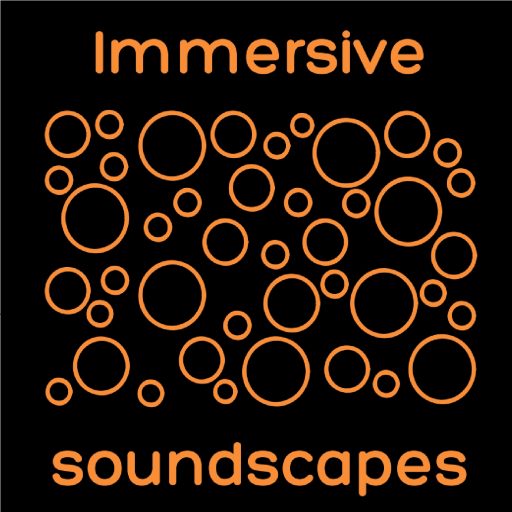Introduction
Ambient music has long been revered for its ability to transcend traditional boundaries and immerse listeners in contemplative and otherworldly soundscapes. Beyond its inherent auditory allure, ambient music also has the power to transform physical spaces and generate immersive environments. In this article, we will explore the captivating relationship between ambient music and spatial experience, uncovering how this genre can turn physical spaces into sonic sanctuaries.
Ambient music’s unique ability to transcend the confines of traditional musical boundaries extends beyond the realm of auditory pleasure; it has the extraordinary power to shape and redefine physical spaces, transforming them into immersive, ethereal environments. In essence, ambient music becomes the architect of sound, crafting sonic sanctuaries that envelop us in a world of sensory wonder. Let’s delve deeper into the captivating relationship between ambient music and spatial experience.
Imagine stepping into a cavernous cathedral, its grandeur and solemnity evoking a sense of awe. Now, picture this sacred space bathed in the gentle, reverberating tones of ambient music. The echoes and harmonies intertwine with the acoustics of the architecture, creating an ethereal atmosphere that transcends mere sound. Suddenly, you’re not just in a physical space; you’ve entered a realm of spiritual contemplation and reflection.
The synergy between ambient music and spatial experience is particularly profound in spaces of worship, where music has played a central role in religious rituals for centuries. Whether it’s the haunting Gregorian chants of a medieval cathedral or the meditative drone of Tibetan singing bowls in a Buddhist temple, ambient music enhances the spiritual journey, facilitating a connection between the earthly and the divine.
Beyond places of worship, ambient music has the power to breathe life into art galleries and museums. When visitors encounter paintings, sculptures, or installations while enveloped in carefully curated ambient soundscapes, their sensory experience is heightened. The music complements and amplifies the emotions and themes of the artworks, creating a harmonious interplay between visual and auditory stimuli.
Ambient music is also a transformative force in natural environments. Picture a dense forest, where the rustling leaves and chirping birds become an integral part of an ambient composition. The music intertwines with the sounds of nature, enhancing the sensation of being fully immersed in the wilderness. Such experiences invite us to connect more deeply with the natural world, fostering a sense of wonder and reverence for our environment.
In contemporary settings, ambient music has found its place in wellness spaces, such as yoga studios and meditation centers. Here, it creates a cocoon of serenity, allowing practitioners to transcend the physical realm and embark on inner journeys of introspection and self-discovery. The ambient soundscape becomes a conduit for mindfulness and relaxation, encouraging a holistic connection of mind, body, and spirit.
Moreover, ambient music’s capacity to shape spatial experiences extends to virtual and augmented reality environments. In these digital realms, composers and designers use ambient music to craft immersive landscapes and interactive narratives. The music guides users through virtual worlds, eliciting emotional responses and blurring the lines between the real and the digital.
In conclusion, the relationship between ambient music and spatial experience is a testament to the genre’s versatility and transformative power. It allows us to transcend the ordinary, turning physical spaces into sonic sanctuaries where the boundaries of reality blur, and our senses are transported to ethereal realms. Ambient music is not merely heard; it is felt, experienced, and remembered, enriching our lives by creating unforgettable connections between sound, space, and the human spirit.
For additional details, consider exploring the related content available here Metaverse beyond the hype: Multidisciplinary perspectives on …
Ambient music, characterized by its subtle textures, extended durations, and evocative atmospheres, is inherently designed to create a sense of place and mood. It invites listeners to step into a sonic landscape where time slows, and the mind is free to wander. This quality makes ambient music uniquely suited to enhancing spatial experiences.
Ambient music, renowned for its ability to craft intricate sonic worlds through subtle textures, extended durations, and evocative atmospheres, possesses an innate capacity to shape the very essence of place and mood. It serves as a sonic architect, constructing immersive environments where listeners are not mere spectators but active participants. This distinctive quality makes ambient music an invaluable tool for enhancing spatial experiences in a multitude of contexts.
Architectural Harmony: In architectural design, ambient music plays a pivotal role in harmonizing physical spaces with emotional and psychological responses. By carefully selecting and tailoring ambient soundscapes, architects can create environments that elicit specific moods and emotions. Whether it’s a tranquil garden, a bustling urban plaza, or a serene meditation space, ambient music can be woven into the very fabric of the design, enhancing the overall experience.
Retail Therapy: Within retail settings, ambient music becomes a strategic asset. It can influence shopping behavior by setting the tone and pace of the shopping experience. From high-end boutiques employing soft, soothing tunes to encourage relaxation and contemplation to lively, rhythmic compositions in bustling markets, ambient music guides shoppers through a carefully curated journey.
Culinary Delights: The world of gastronomy also benefits from the transformative power of ambient music. Restaurants and eateries leverage music to complement the culinary experience, enhancing the ambiance and influencing diners’ perceptions of taste and pleasure. The right soundtrack can elevate a meal from mere sustenance to a multisensory delight.
Health and Wellness: In the realm of health and wellness, ambient music becomes a therapeutic tool. It sets the stage for relaxation and healing, turning spa sessions, yoga classes, and meditation practices into transcendent experiences. The gentle ebb and flow of ambient soundscapes guide individuals on journeys of self-discovery and rejuvenation.
Transportation and Transit: Even during travel and transit, ambient music is an invaluable companion. In airports, train stations, and public transportation hubs, it provides a sense of calm amidst the chaos, making the journey more pleasant. Airlines and trains often curate ambient playlists to enhance the in-flight or on-board experience, creating a unique sense of place in the process.
Creative Inspiration: Ambient music’s ability to transport the mind to different realms is a boon for creative professionals. It fosters an atmosphere conducive to deep focus and innovation. Writers, artists, and designers often turn to ambient music to create a mental space where ideas can flow freely and inspiration takes root.
Environmental Design: Beyond these specific contexts, ambient music finds utility in environmental design and urban planning. It can transform public spaces into vibrant hubs of culture and creativity, fostering a sense of community and connectivity. From open-air concerts to immersive sound installations, ambient music breathes life into urban landscapes.
In essence, ambient music stands as a versatile medium capable of shaping the perception of spaces and the experiences they offer. Its ability to evoke emotions, guide behavior, and transport the mind makes it an invaluable asset in the hands of architects, designers, retailers, and anyone seeking to create environments that resonate with the human spirit. Whether as a backdrop or a focal point, ambient music invites individuals to step into a world where sensory boundaries blur, and the journey becomes as important as the destination.
Should you desire more in-depth information, it’s available for your perusal on this page: Resonant Spaces: Sound Art at Dartmouth | Page 5 | Hood Museum

When carefully integrated into a physical environment, ambient music has the power to transform spaces into immersive landscapes. Whether it’s a cozy living room, a contemporary art gallery, or a vast natural setting, ambient compositions can elevate the ambiance and mood. Through gentle harmonies, minimalistic melodies, and the interplay of sound, ambient music transforms the ordinary into the extraordinary.
In a gallery or museum, for instance, ambient music can serve as an auditory backdrop to visual art, deepening the emotional resonance of the works on display. In a spa or wellness center, ambient compositions provide a soothing and meditative atmosphere, enhancing relaxation and rejuvenation. The music transports visitors, facilitating a connection with the surroundings that goes beyond the visual and extends into the realm of sound.
Should you desire more in-depth information, it’s available for your perusal on this page: Spatial | Newsroom | Fast Company: I got to hear what an office can …

Ambient music also plays a vital role in spatial design and soundscape composition. Architects and interior designers often collaborate with ambient musicians to craft spaces where sound is an integral part of the environment. These collaborations result in environments where the physical and auditory elements harmonize seamlessly.
For example, architectural structures can incorporate acoustic design principles that enhance the acoustic qualities of a space, allowing ambient music to envelop visitors in a 360-degree auditory experience. Public spaces, such as airports or transit hubs, can use ambient music to create a calming and welcoming atmosphere, easing the stresses of travel.
For additional details, consider exploring the related content available here Senses of place: architectural design for the multisensory mind …

Beyond aesthetics, ambient music also has the potential to foster mindfulness and presence within a space. The gentle and non-intrusive nature of ambient compositions encourages individuals to be fully present in their surroundings. This heightened awareness can lead to a deeper connection with the space, a sense of tranquility, and a more profound engagement with the environment.
Indeed, ambient music possesses a unique capacity that extends beyond mere aesthetics—it has the remarkable potential to cultivate mindfulness and a profound sense of presence within a given space. The subtle, unobtrusive quality of ambient compositions invites individuals to immerse themselves fully in the moment, in their immediate surroundings. This heightened state of awareness can have transformative effects, fostering a deeper connection with the environment, infusing the space with tranquility, and enriching one’s engagement with the world around them.
Enhancing Spatial Awareness: Ambient music acts as a sonic guide, gently leading our senses to explore the contours of a space. As we tune into the delicate nuances of the music, we become more attuned to our surroundings. Every subtle rustle, echo, or vibration within the space becomes more apparent. This heightened spatial awareness can transform even familiar places into novel, immersive environments, unveiling hidden details and dimensions that often go unnoticed.
Creating a Tranquil Atmosphere: Ambient compositions have an innate ability to shape the emotional atmosphere of a space. The soft, enveloping sounds can soothe the mind and evoke a sense of calm. In bustling or stressful environments, ambient music becomes a refuge—a sonic oasis of tranquility. It encourages individuals to let go of distractions and find solace in the present moment, facilitating mental clarity and emotional well-being.
Deepening the Connection: As we engage with ambient music within a particular space, we enter into a symbiotic relationship between sound and environment. The music becomes an integral part of our experience of that space, and the space, in turn, influences our perception of the music. This interplay deepens our connection with both elements, fostering a profound sense of belonging and harmony.
Inspiring Contemplation: The meditative quality of ambient music invites introspection and contemplation. It encourages individuals to pause, reflect, and appreciate the beauty in the ordinary. This contemplative aspect can transform a space into a sanctuary for introspective thought, where one can explore ideas, memories, or simply revel in the beauty of the moment.
Enhancing Mindfulness: Ultimately, ambient music acts as a catalyst for mindfulness—a practice of being fully present in the here and now. In the gentle embrace of ambient sounds, distractions fade, and the mind becomes more attuned to the present moment. This heightened state of mindfulness can lead to increased focus, reduced stress, and an overall sense of well-being.
In summary, the impact of ambient music on a space transcends aesthetics, venturing into the realm of mindfulness and profound presence. It enhances spatial awareness, creates tranquil atmospheres, deepens connections, inspires contemplation, and fosters mindfulness. Through its delicate sonic tapestries, ambient music transforms spaces into havens of awareness, offering individuals an opportunity to engage more deeply with their environments and, in the process, discover a deeper connection to themselves and the world around them.
Explore this link for a more extensive examination of the topic: Boosting Creativity through Users’ Avatars and Contexts in Virtual …

Conclusion
Ambient music’s ability to create immersive environments and enhance spatial experiences is a testament to its unique power. By seamlessly blending with physical spaces, it transcends the boundaries of traditional music and becomes an integral part of the surroundings. Whether in a gallery, a wellness center, or an architectural marvel, ambient music has the capacity to elevate the atmosphere, deepen the emotional resonance, and facilitate mindfulness and presence. As we continue to explore the intersection of sound and space, ambient music stands as a testament to the transformative potential of music in our daily lives, turning the ordinary into the extraordinary through the magic of sound.
For a comprehensive look at this subject, we invite you to read more on this dedicated page: Building Literacy Through Immersive Classrooms | All4Ed
More links
To expand your knowledge on this subject, make sure to read on at this location: Senses of place: architectural design for the multisensory mind …
